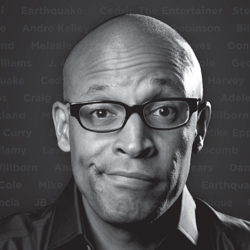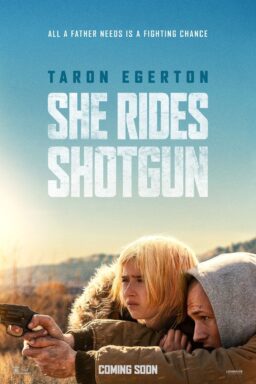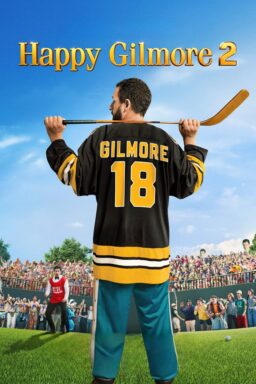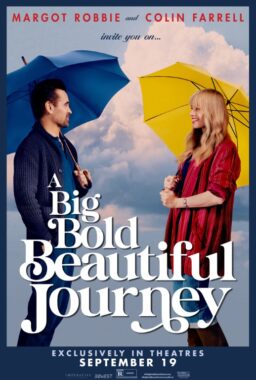
Why not fold documentaries into my list of the “Best Films of 2011?” After all, a movie is a movie, right? Yes, and some years I’ve thrown them all into the same mixture. But all of these year-end Best lists serve one useful purpose: They tell you about good movies you may not have seen or heard about. The more films on my list that aren’t on yours, the better job I’ve done.
That’s particularly true were you to depend on the “short list” released by the Academy’s Documentary Branch of 15 films they deem eligible for nomination. The branch has been through turmoil in the past and its procedures were “reformed” at one point. But this year it has made a particularly scandalous sin of omission. It doesn’t include “The Interrupters” (currently scoring 99% on the Tomatometer), which has received better reviews and been on more critic’s Best lists than any other.
For Steve James of Kartemquin Films, who made “The Interrupters” with author Alex Kotlowitz, this is an old story. The Documentary Branch also failed to shortlist James’s “Hoop Dreams” (1994), which is generally considered one of the greatest documentaries of all time. In a scandal at that time, it was revealed that the branch’s volunteer screening committee turned off “Hoop Dreams” after watching only 15 minutes.
The year’s best documentaries:

1. The Interrupters
Steve James (in center above), who made the masterpiece “Hoop Dreams,” now makes his most important film, telling the story of ex-convicts who go daily into the streets of Chicago to try to talk gang members out of shooting at each other. All have done prison time. Some have murdered. They were young when were seduced by the lure of street gangs. Today they see young people throwing their lives away and often killing bystanders by accident.
James’ film follows members of CeaseFire, tough negotiators who monitor gang activity in their neighborhoods and try to anticipate developing warfare. They make it their business to know the gang leaders and members. They build trust. In some shots in this film they are physically in the possible line of fire–and so are Steve James and his small crew. This film has true impact.

2. Bill Cunningham New York
A movie about a happy and nice man. Bill Cunningham was lucky to find what he loves to do, to win universal affection from all who know him, and to make a contribution to our lives and times. Doing what he loves is very nearly all he does, except to sleep and eat.
Bill celebrates his 80th birthday in the movie. Every day of his life he still pedals around Manhattan on his bicycle, taking photographs of what people are wearing. You can find his work featured in big spreads in The New York Times. He’s not a fashion photographer” of a paparazzi. He’s genuinely fascinated by what people wear, and will stop in the middle of the street if he spots an interesting hat.

3. Into the Abyss
Perhaps the saddest film Werner Herzog has ever made, centering on two young men in prison. Michael Perry is on Death Row in Huntsville, America’s most productive assembly line for executions, and on the day Herzog spoke with him had eight days to live. Jason Burkett, his accomplice in the stupid murders of three people, is serving a 40-year sentence. They killed because they wanted to drive a friend’s red Camaro.
Herzog became curious about the case, took a small crew to Huntsville and Conroy, Texas, where the murders took place, and spoke to the killers, and members of their families and those of their victims. He obtains interviews of startling honesty and impact. We also meet Captain Fred Allen, who was for many years in charge of the guard detail on Huntsville’s Death Row. He starts talking with Herzog and is swept up by memory and emotion, explaining why one day, after overseeing more than 100 executions, he simply walked away and decided he was opposed to the death penalty.

4. Tabloid
By Errol Morris, who says his subject, Joyce McKinney, is his favorite protagonist. In 1977 McKinney was involved in the infamous “Case of the Manacled Mormon,” made to order for the British tabloids we’ve been reading about during the News of the World. A former Miss Wyoming, she was alleged to have kidnapped an American Mormon missionary in the UK, handcuffed him to a bed, and made him a sex slave. All lies, she says.
“Rashomon” will inevitably be evoked in discussions of this film. Many scenarios fit the facts. Morris presents officials with boundless reasons to think McKinney guilty of stalking, abduction and possible rape, He also allows McKinney to offer a perky alternative perspective on the same events. Which version does Morris believe? With him, you never quite know for sure.

5. Resurrect Dead
It’s possible you’ve stepped on a Toynbee Tile (above) yourself. These are hundreds of crudely-lettered tiles stuck with tar to pavements and sidewalks in cites up and down the Eastern seaboard, as far west as Kansas City, and in three South American cities. They may have started appearing in 1983. What do they possibly mean? Who devises and places them?
Writer director Jon Foy follows three Tile sleuths: Justin Duerr, Steve Weinik, Colin Smith. Starting with a small handful of meager clues, their detective work leads them to strange places: A paragraph in an old Philadelphia Inquirer, a play by David Mamet, addresses in South Philadelphia, a convention of ham radio operators. They find web sites filled with Tile photos and rumors. The film is confoundingly watchable.

6. Cave of Forgotten Dreams
The second film on my list by Werner Herzog, a master of both features and documentaries. He gains access to Chauvet Cave, above the Ardèche River in Southern France. There humans created the oldest cave paintings known to exist. They spring from the walls with boldness and confidence, as if the artists were already sure what they wanted to paint and how to paint it. Perhaps 25,000 years ago, a child visited the cave and left a footprint, the oldest human footprint that can be accurately dated.
The modern archeologist who discovered the cave had to descend a narrow opening to its floor, far below on the original entrance level. It is their entry route that Werner Herzog follows in his spellbinding new film, “Cave of Forgotten Dreams.” Herzog filmed in 3D, to better convey how the paintings follow and exploit the natural contours of the ancient walls. The process also helps him suggest how the humans of the Upper Paleolithic era might have seen the paintings themselves, in the flickering light of their torches. To the degree that it’s possible for us to walk behind Herzog into that cave, we do so.

7. Pina
Wim Wenders’ mesmerizing documentary presents the choreography of Pina Bausch, a German dancer and director. Watching the film, I didn’t know she died in 2009, on the eve of principal photography. But I wasn’t surprised when I learned that. It accounts for the elegiac tone of many of her colleagues and troupe members. They are reserved, introspective, solemn. Joining her troupe seems to have been more a life decision than a career move. They loved her.
Bausch’s troupe shares a common understanding of time and space. There is a remarkable piece here called “Cafe Mueller” which I’d earlier seen in Pedro Almodovar’s “Talk to Her,” in which some dancers seem to wander blindly in a room where other dancers rearrange chairs and tables. The parallel with life itself is there to be seen. Wenders’ use of 3D is effective, helping him enter more fully into the performance space. There is usually no convention of a proscenium arch in the film. One piece uses water, and another sand, which the dancers cover the stage with and then crawl or roll through to leave marks of their movements. The entire film was, for me, meditative.

8. Garbo the Spy
He was called “Garbo” because an Allied spymaster thought he was the best actor in the world. Juan Pujol García, a Spaniard based in Lisbon, fed the Nazis a stream of misleading information from a spy network that existed entirely in his imagination. Using invented facts and a spy network that didn’t exist, he convinced the Nazis that the Allied landing at Normandy was a decoy operation to draw their troops away from the “real” landing site, at Calais. One man’s imagination changed the course of the way.
Lacking period footage of Garcia (naturally), director Edmon Roch ingeniously cobbles together newsreel footage, scenes from old war movies, and modern talking heads to piece together his story of a startling deception.

9. The Last Mountain
Is there another state more cruelly defaced than West Virginia? Its mountains have been blown up, its forests ripped out, and the green land which the settlers discovered now includes a wasteland of a million toxic acres. Nationally, one in 100,000 people get brain tumors. In a small West Virginia town surrounded by strip mining, six neighbors have developed brain tumors. What are the odds of that?
This is a blunt and enraged documentary about Coal River Mountain, the site of a last stand against Massey Energy, a company it says disregarded environmental concerns, compromised the political process and poisoned great stretches of the state in the name of corporate profits. Now lakes of sludge loom above towns, rivers are dead and dying, and heavy metals invade the bloodstreams and brains of the inhabitants. Recent court findings against Massey provide a footnote to Bill Haney’s film.

10. Louder than a Bomb
Poetry slams began in Chicago in 1984 and have become an international phenomenon. They’re poetry readings as a spectator sport. Individuals and teams are scored by judges on the Olympic 10-point scale. “Louder Than a Bomb” is about the 2008 Chicago-area slam of that name, the nation’s largest. Teams and soloists from 60 high schools compete, and the finalists face off in a city-wide slam that fills a theater usually used for rock concerts. The suspense that year initially centered on Steinmetz, a troubled inner city school that had never entered before it won the 2007 Bomb in a thrilling upset. Can Steinmetz and its coach, James Sloan, repeat?
The film was directed by Greg Jacobs and Jon Siskel (Gene’s nephew), who followed several competitors for months and guessed well in choosing those they focused on. Like earlier docs about spelling bees and Scrabble tournaments, but with more showmanship and energy, it focuses on individuals and builds great suspense. Shown at Ebertfest 2011.

11. Page One: Inside the New York Times
One newspaper remains, as it has long been, the most essential source of news in this country. “Page One: A Year Inside the New York Times” sets out to examine its stature in these hard times for print journalism, but ends up with more of the hand-wringing that dominates all such discussions. People who are serious about the news venerate the past, hope for the future, and don’t have a clue about the present.
Much attention is given to the paper’s role in digital media, but happens is that a charismatic hero comes along and distracts from the big picture. That man here is David Carr, the paper’s raspy-voiced star media reporter. He reminds me of the reporters I held in awe when I first went to work for newspapers. Like Mike Royko, he combines cynicism, idealism and a canny understanding of how things really work. As we watch him meticulously report the story that exposed the lamentable “frat house” management of Sam Zell’s Chicago Tribune, we see the reporter as a prosecutor, nailing down an air-tight case.

12. One Lucky Elephant
Tells the stories of Flora, an African elephant, and David Balding, who runs a St. Louis circus. Flora witnessed her mother killed, and was shipped in a crate to the United States at a tender age, where after training and bonding with Balding, she became the star performer and namesake of Circus Flora. This is a one-ring circus that was created as a commissioned work for the 1986 Spoleto Festival in Charleston and has performed annually in St. Louis since 1987.
Balding and his wife, Laura, decided Flora was reaching the end of her show business career and deserved a pleasant retirement. “One Lucky Elephant” follows their search for a home for Flora, which began in 2000 and became a great challenge. A larger question coils beneath the surface of the film. What happens to an elephant that is “trained?” Knowing humans all of its life, can it find happiness in an elephant sanctuary?

13. Buck
One of the big documentary hits of the year. Buck Brannaman was the original “horse whisperer,” the character who Nicholas Evans based his novel on and Robert Redford used as the on-set consultant for his film. He has a way with horses, and Cindy Meehl’s documentary is moving as he shows them engaged in dances of understanding.
Buck was abused as a child, and that experience influenced his gentle approach to horse training. It involves empathy for the feelings of the horse. Buck understands how horses read humans, how they interpret gestures, and how they’re “so sensitive they can feel a fly land.” I was reminded of Temple Grandin, the autistic designer of cattle-handling chutes, whose secret was identifying the feelings of cattle with her own.

14. Conan O’Brien Can’t Stop
The title has piercing accuracy. After NBC and Jay Leno pulled the rug out from under him, O’Brien went overnight from hosting the Tonight Show to being banned from television for six months. He became like Wile E. Coyote, chasing the Road Runner of his dreams off the edge of a cliff and afraid to look down. Enraged at Leno and NBC, he quickly undertook “The Legally Prohibited from Being Funny on Television Tour,” which covered 32 cities, from Radio City Music Hall to the Bonnaroo Music Festival in Tennessee–where inside a tent in 100-degree heat he was expected to introduce every act, and did.
Here is a man driven to assert himself. He waited five years for the Tonight Show, lost it in months, and needed to say to the universe, “Sir! I exist!” The film, directed by Rodman Flender, watches him before and after shows and en route between cities, seeing a man incapable of giving himself a break. Overworked, exhausted, assaulted by demands, he cannot say no to an autograph, patiently hosts waves of visitors in his dressing room, drums up work on his days off, and at times seems on the edge of madness. The man behind the image.

15. Strongman
A tantalizing example of the kind of documentary I find engrossing: A film about an unusual person that invites us into the mystery of a human life. Stanley Pleskun bills himself as “Stanless Steel, the Strongest Man Alive.” Whether this is true is beside the point. Stanless, as I will call him, believes it absolutely. His girlfriend Barbara and his brother Michael agree, I gather, although they never actually say so.
How does the Strongest Man in the World support himself? He works as a freelance in the scrap metal industry, collecting scrap and hauling it to a yard. We see him heaving heavy loads into the bed of his truck. Does this help him train? No, I learn from the film’s notes, it tires him out and makes it harder to train. Although Zackary Levy, the filmmaker, followed him over a course of years and shot hundreds of hours of films, we only see him actually training twice: Once squeezing a hand grip, and again staggering for several yards while carrying heavy concrete blocks.
His girlfriend Barbara She introduces his act: “Ladies and gentlemen, boys and girls! Presenting Staaaaaanless Steeeel! The Strongest Man in the Woooorld!” He makes appearances at events in New Jersey and New York, bending steel bars, lifting trucks, and so on. He is paid $1,000 and expenses to appear on a British TV show. Is he really that strong? I have no idea.

16. Project Nim
Can a chimpanzee learn to speak by using sign language? Yes. But in what sense does it know what it is saying? “Project Nim,” a fascinating documentary, follows the life of a chimp named Nim Chimpsky as it’s raised like a human baby and then shuttled from one set of “parents” and “homes” to another. The chimp emerges from this experience as a more admirable creature than many of its humans.
This is a new film by James Marsh, who made the Oscar-winning “Man on Wire.” Like Errol Morris on occasion, Marsh weaves dramatic recreations into his film, so that sometimes we see actual documentary footage and at other times we see actors or even (although you won’t notice it) animatronics. How this substitution fits with a traditional documentary ethics I will set aside. It produces a very absorbing film.

17. Waste Land
Across the world’s largest garbage dump, near Rio de Janeiro, the Pickers crawl with their bags and buckets, seeking treasures that can be recycled: Plastics and metals, mostly, but anything of value. From the air they look like ants. You would assume they are the wretched of the earth, but those we meet in “Waste Land” seem surprisingly cheerful. They lead hard lives but understandable ones. They make $20 or $25 a day. They live nearby. They feel pride in their labor, and talk of their service to the environment.
Directed by Lucy Walker, it takes as its entry point into the lives of the Pickers the work of the Brazilian artist Vik Muniz. As a youth he had the good fortune to be shot in the leg by a rich kid, who paid him off; he used the money to buy a ticket to America, and now he is famous for art that turns garbage into giant constructions which he exhibit and photographs. Documentaries like these three help us, perhaps, to more fully appreciate our roles as full-time creators of garbage.

18. Phunny Business
What Second City was for Saturday Night Live, a comedy club in Chicago was for virtually every black comedian who emerged in the 1990s. All Jokes Aside was a black-owned enterprise that seemed to have infallible taste in talent, perhaps because it was the only club in the country that didn’t relegate blacks to “special nights” or “Chocolate Sundays.” Its opening night act was Jamie Foxx, then unknown. It introduced or showcases such as Bernie Mac, Cedric the Entertainer, Steve Harvey, D.L. Hughley, Carlos Mencia, A.J. Jamal, Sheryl Underwood, George Wallace, Bill Bellamy, Dave Chapelle, Adele Givens, and on and on, including the personnel of the touring Kings of Comedy and Queens of Comedy.
This is a film not so much about black comedians, although we see and hear a lot of them, but about black entrepreneurs. Raymond C. Lambert, who co-founded the club, began as a stock trader for the firm of the black Chicago millionaire Chris Gardner (who himself inspired the character played by Will Smith in “The Pursuit of Happyness”). After a visit to Bud Friedman’s Improv in Los Angeles, he wondered why a club like that wouldn’t work with black comics in Chicago. Turned out, it would.

19. Make Believe
A charming doc about the finalists in the Teenage Magician Contest at the annual World Magic Seminar in Las Vegas. From Malibu, Chicago, Colorado, Japan and South Africa they come, dreaming of being presented with first place by the great Lance Burton. The documentary visits their homes, gets their stories, talks to their friends and parents, and follows them backstage in Vegas.
Not a single rabbit is pulled from a hat. Most of the trucks are small scale–locking rings, disappearing scarves, card production. A deck of cards in their hands seems to have a life of its own. One kid turns cards into iPhones while they’re fanned between his fingers. We see him in his basement, building the props.
One thing we don’t find out is how any of the tricks are done. The secrets in some cases are pretty widely known. Most of the people in the audience know in theory exactly how they’re done, but are connoisseurs judging how well they are performed. Magicians have a saying: “The trick is told when the trick is sold.” These kids are sold on tricks.

20. Being Elmo
All Kevin Clash ever wanted to do was make puppets. That came even before he fixated on Muppets. One day he had an inspiration so urgent that it required cutting up his father’s coat. The result was a nice enough puppet, but when Kevin emerged from his creative frenzy he realized his father might have stern words for him. Called in trembling to the old man, all he heard was: “Next time, ask.”
“Being Elmo” is a documentary that follows him from his childhood through a series of good breaks that lead him into the universe of Jim Henson and Sesame Street, and we even hear an eyewitness to the day he “discovered” the Elmo character.
After another puppeteer grew frustrated and threw Elmo at Kevin saying “Here, you try it,” Kevin fooled around with a series of voices until Elmo, one of the most beloved of all Muppets, emerged. He also defined Elmo’s central characteristic: All he wanted was to love and be loved, and hug you. What kid couldn’t identify? The original Elmo craze led to buyer panics for the Tickle Me Elmo dolls, and Clash’s life has been a happy one.
Based in part on my original reviews. Here is the Academy’s complete short list of documenataries eligible for Oscar nomination: “Battle for Brooklyn,” “Bill Cunningham New York,” “Buck” “Hell and Back Again,” “If a Tree Falls: A Story of the Earth Liberation Front,” “Jane’s Journey,” The Loving Story,” “Paradise Lost 3: Purgatory,” “Pina” “Project Nim,” “Semper Fi: Always Faithful,” “Sing Your Song,” “Undefeated,” “Under Fire: Journalists in Combat” and “We Were Here.”
My list of the Best Features of 2011.











